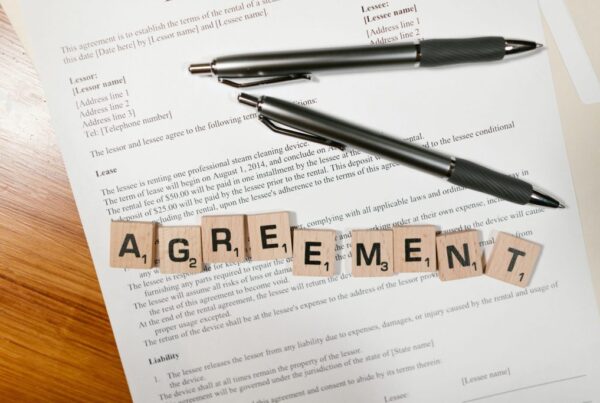This post originally appeared on SimonCRE Insights Blog and is republished with permission. Find out how to syndicate your content with theBrokerList.
Environmental assessments help identify any concerns that need to be addressed before a property’s transaction or development can take place. The condition of the structure, underlying soils, and historical inspections are all conducted to determine the state of the property.
Here are some of the most commonly asked questions when conducting environmental assessments in commercial real estate.
When is an environmental site assessment needed?
An Environmental Site Assessment (ESA) is typically conducted during the buyer due diligence period, prior to the closure of a commercial property. The assessment depends on the use of the property and whether there are suspected hazardous substances from past or current activity. The government can require it to comply with federal laws and regulations. Or if a buyer intends to use chemicals or other potentially harmful substances while occupying the property, getting an environmental site assessment would be in their best interest. ESAs can be completed on various types of properties including vacant land, agricultural, multifamily residential, commercial, and industrial.
How long does an environmental assessment typically take?
An ESA can last anywhere from a few days to a month or even longer depending on if the buyer wants to conduct a Phase I and a Phase II assessment. Buyers should expect a Phase I ESA to take about 20 days or more to complete for it to be done properly. ESAs that only take a few days to complete might not have been carried out correctly, and it’s possible that report findings might be incorrect or incomplete. A Phase I ESA will expire 180 days after the report is issued. A Phase II can take about 30 to 45 days depending on the environmental condition warranting the additional assessment.
Who is responsible for conducting the environmental assessment?
A developer or a lender typically arranges for the ESA to be conducted and usually hire an environmental consultant who is able to carry out the assessment. The lender would require a Phase I to ensure they would be able to recover the amount of their loan if they were forced to foreclose on the property if an environmental condition was uncovered. If the lender initially pays for the ESA, the cost will be passed on to the buyer as part of the closing costs. The buyer or developer can also arrange for an ESA. Smaller lenders may require the buyer to get one, or the buyer may just want to know the condition of the property before the close.
An environmental technician, consultant, or geologist will be the one conducting interviews, gathering data and research on impact zones, and identifying potential effects. An agency reviews the findings and determines if the report is accurate. They will measure the report against historical data and other previous reports to determine the state of the property.
What types of hazards should you look for in an ESA?
ESAs inspect historical and visual evidence of contamination or hazards that might impact the people and operations who will be on the property. The assessment examines the land and determines if there was improper handling or disposal of toxic and hazardous materials and waste. There could be potentially harmful underground storage tanks, accidental spills, radioactive hazards, brownfields, or abandoned or active land mines. Contaminants could have an impact on the surrounding ecosystem and human health, resulting in acute or chronic side effects. An assessment may qualify the purchaser for the innocent landowner defense provisions of the Comprehensive Environmental Repurposes, Compensation and Liability Act (CERCLA), allowing them to avoid having to deal with expensive or unforeseen costs down the road.
How are environmental assessments reviewed?
ESAs are reviewed by the preparation of historical documents and alongside environmental laws. An assessment’s context should include a geographical, social, and environmental examination of the property so the long-term and short-term impacts on the region can be accounted for. The ESA should also consider the beneficial and adverse impacts of the proposed development.
Should you let sleeping contamination lie?
When conducting an ESA, the buyer runs the risk of discovering contamination. If this is the case, the buyer could be responsible, depending on the state, for having to conduct cleanup efforts to bring the land or building up to local, state, or federal standards. A buyer should always be prepared for the possibility of uncovering contamination and weigh the pros and cons before proceeding to sales negotiations.
What’s the difference between Phase I and Phase II ESA’s?
A Phase I ESA investigates the past and current uses of the property to determine any possible existence of contamination. Think of this phase as a visual and historical report. Any possible liabilities will be determined during this phase.
A Phase II investigation is additional testing that occurs due to warranting recommendations in a Phase I. While it does not include site testing or sampling, it does involve a review of public records, a visit to the site, interviews of owners, past owners, occupants, and local government officials, and a final report of any possible contamination. Soil and water samples will be taken and tested during this phase.
Is Phase I important for every commercial property purchase?
A Phase I assessment analyzes the likelihood of site contamination through visual observation. While federal regulations do not require every commercial property to get an ESA, lenders are likely to require an assessment to protect their investment from financial loss. Prospective property buyers who are not borrowing money are still highly encouraged to get an ESA to avoid financial loss in the future. If an ESA is conducted prior to the purchase of a property and the site is later found to have contamination, the property will be protected under CERCLA liability.
What can happen if a buyer does not get an environmental assessment?
A buyer takes a big financial risk if they choose not to conduct an ESA on a property before closing. Possible contaminants on the property could harm the health of those who frequently visit it and could turn into a liability. The last thing any buyer would want is to be hit with a large bill when something they could have prevented goes wrong. Taking the time to complete an assessment can make or break the sale of a property and determine the overall benefit of the investment in the long run.
Why do lenders care about environmental assessments?
Lenders want to protect themselves against any liabilities and financial loss, which is why many require anyone taking out a loan on a commercial property to get an ESA. The CERCLA Act imposes liability on anyone responsible for the commercial property regardless of relative contribution and can require liable parties to conduct cleanups. Lenders always request ESAs from the investee when state and federal regulations require assessments on a particular property.
|
|
PETER KRAHENBUHL >Vice President of DevelopmentPeter Krahenbuhl started at SimonCRE in 2015 as a Project Manager and now serves as Vice President of Development. He plays a vital role in the daily planning and development associated with successfully driving multiple projects from inception to completion. Other Posts by Peter:
|







